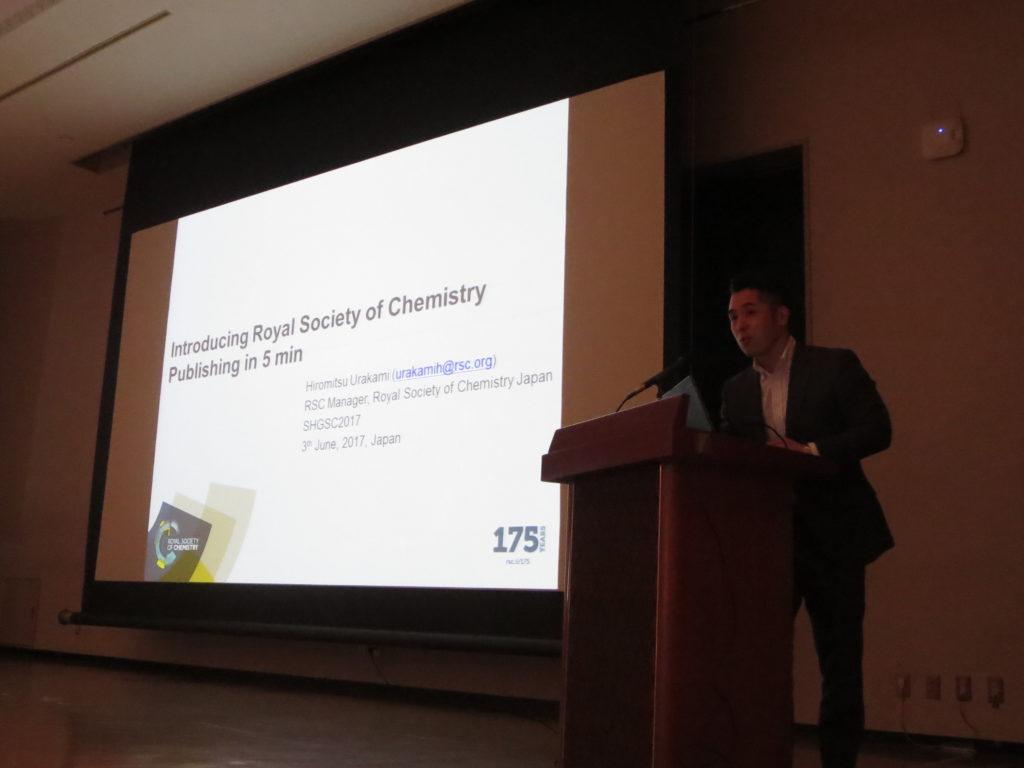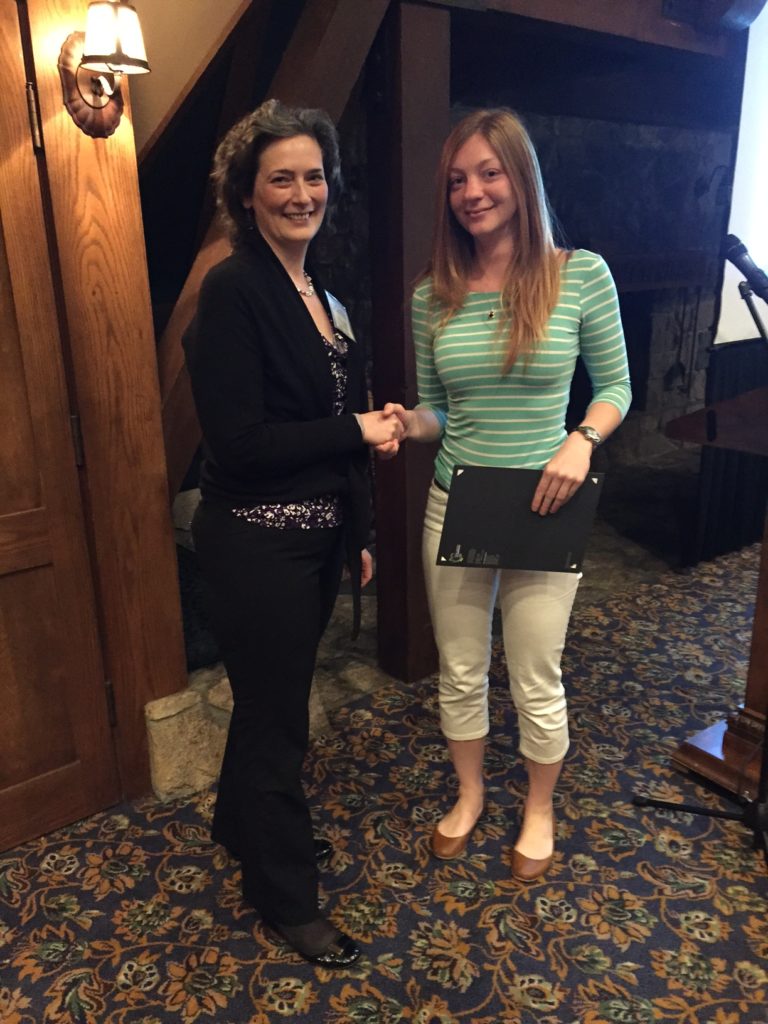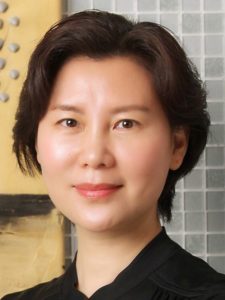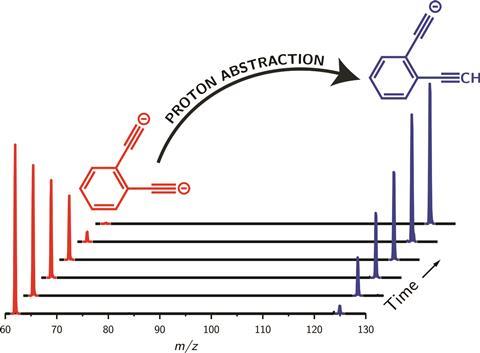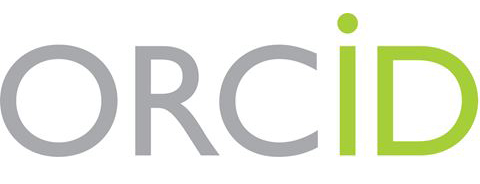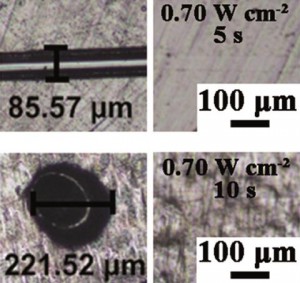The Host Guest Supramolecular Chemistry Annual Symposium (website in Japanese) is an annual event that is organized by the Association of Research for Host-Guest and Supramolecular Chemistry. This year, the 15th occurrence of this symposium took place at the Ritsumeikan University on 3-4 June 2017. The event was attended by 230 people and counted 39 talks and 128 poster presentations.
The Chemical Science, ChemComm and Organic & Biomolecular Chemistry poster prizes were delivered to the 3 most outstanding poster presentations, along with 7 other poster prizes.
Nobuhiko Nishitani from Kyoto University was awarded the Chemical Science award for their poster titled: STM Observation of Cooperative Self-Assembly at the Liquid/Graphite Interface: Influence of Intercolumnar Interactions on Domain Size and Shape
Tsuyoshi Mashima from Osaka University was awarded the ChemComm award for their poster titled: Construction of Zn-substituted Hexameric Hemoprotein with Multiple Photosensitizers and Evaluation of its Light Harvesting Function
Tomokuni Kai from Tokyo Institute of Technology was awarded the Organic & Biomolecular Chemistry award for their poster titled: Polyaromatic Micelles: Emission Enhancement of Eu(III)-complexes in Water upon Encapsulation
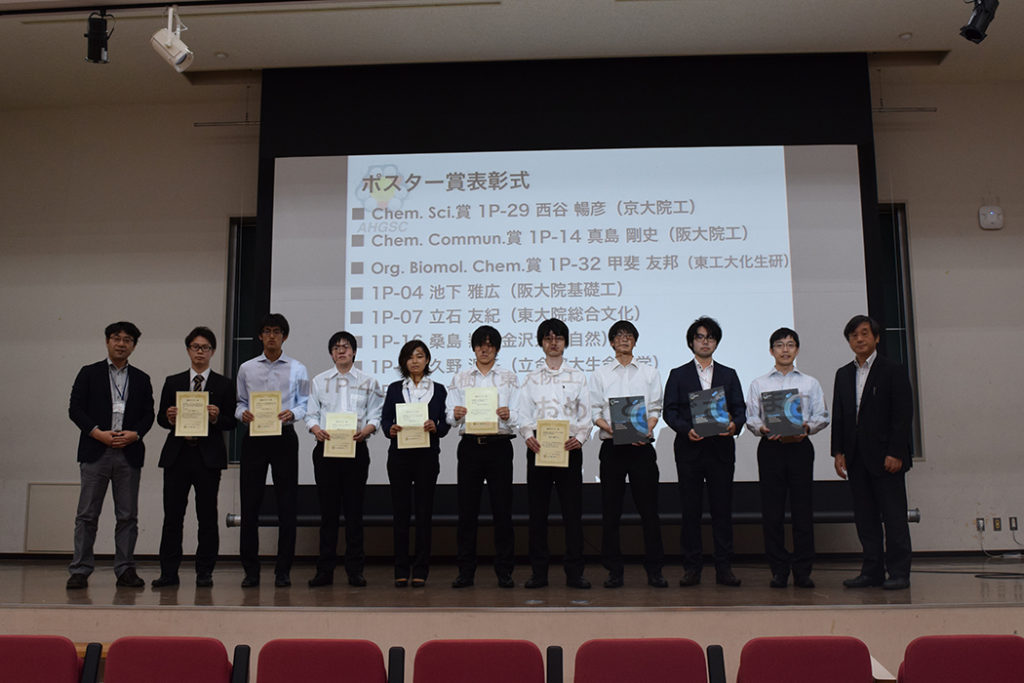
From right to left: Prof. Tatsuya Nabeshima (University of Tsukuba), Nobuhiko Nishitani, Tsuyoshi Mashima, Tomokuni Kai, and the poster prize winners, along with Prof. Hiromitsu Maeda (Ritsumeikan University, left) (Click to enlarge)
Dr Hiromitsu Urakami, from the Royal Society Chemistry, gave a lauded presentation on Publishing on 3rd June.


